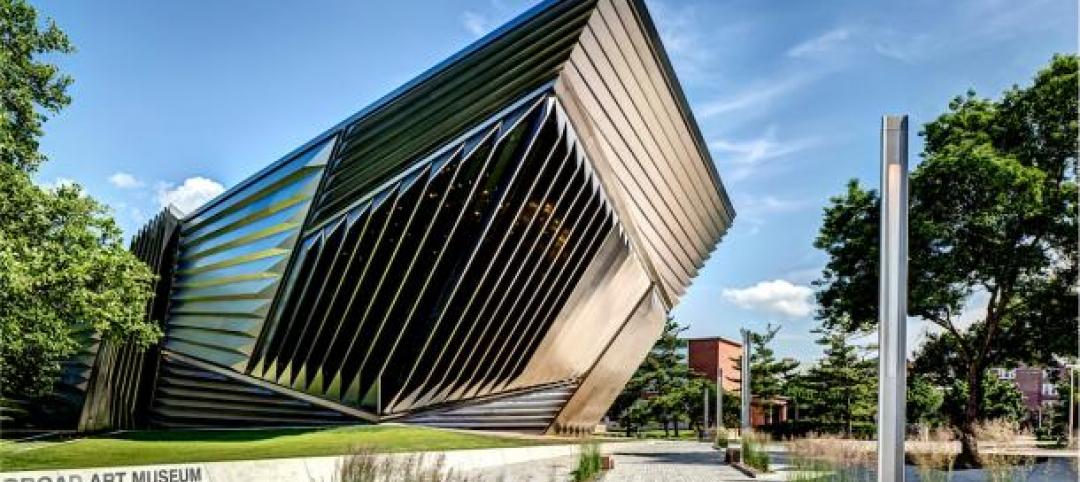The U.S. General Services Administration (GSA) recently released updated building efficiency standards for federal buildings.
The mandatory design and construction standards and performance criteria apply to 300,000 federal buildings. The standards will advance building efficiency, reduce emissions, and increase resilience, according to a GSA news release.
The standards will advance the Federal Sustainability Plan to achieve net-zero emissions from all federal buildings by 2045, and promote the use of American-made, low carbon construction materials.
The P100 standards require that facilities adopt advanced energy conservation strategies and eliminate on-site fossil fuel use. The standards call for grid-interactive efficient buildings, leverage innovative technologies through GSA’s Green Proving Ground, require the use of low-embodied carbon materials, and potable water reuse.
The standards address:
• Electrification: New standards for building equipment and systems to be powered by clean energy sources.
• Embodied Carbon: Requirement to utilize low-embodied carbon materials, including salvaged, reused, regenerative, and biomimetic options.
• Energy Efficiency: Enhanced building envelope performance to minimize energy loss and improve overall efficiency.
• Grid-Interactive Efficient Buildings: New measures to support a more resilient, responsive grid.
Related Stories
| Apr 30, 2014
Visiting Beijing's massive Chaoyang Park Plaza will be like 'moving through a urban forest'
Construction work has begun on the 120,000-sm mixed-use development, which was envisioned by MAD architects as a modern, urban forest.
| Apr 29, 2014
Best of Canada: 12 projects nab nation's top architectural prize [slideshow]
The conversion of a Mies van der Rohe-designed gas station and North Vancouver City Hall are among the recently completed projects to win the 2014 Governor General's Medal in Architecture.
| Apr 29, 2014
USGBC launches real-time green building data dashboard
The online data visualization resource highlights green building data for each state and Washington, D.C.
| Apr 23, 2014
Mean and Green: Top 10 green building projects for 2014 [slideshow]
The American Institute of Architects' Committee on the Environment has selected the top ten examples of sustainable architecture and ecological design projects that protect and enhance the environment. Projects range from a project for Portland's homeless to public parks to a LEED Platinum campus center.
| Apr 16, 2014
Upgrading windows: repair, refurbish, or retrofit [AIA course]
Building Teams must focus on a number of key decisions in order to arrive at the optimal solution: repair the windows in place, remove and refurbish them, or opt for full replacement.
| Apr 15, 2014
12 award-winning structural steel buildings
Zaha Hadid's Broad Art Museum and One World Trade Center are among the projects honored by the American Institute of Steel Construction for excellence in structural steel design.
| Apr 9, 2014
Steel decks: 11 tips for their proper use | BD+C
Building Teams have been using steel decks with proven success for 75 years. Building Design+Construction consulted with technical experts from the Steel Deck Institute and the deck manufacturing industry for their advice on how best to use steel decking.
| Apr 2, 2014
8 tips for avoiding thermal bridges in window applications
Aligning thermal breaks and applying air barriers are among the top design and installation tricks recommended by building enclosure experts.
| Mar 26, 2014
Callison launches sustainable design tool with 84 proven strategies
Hybrid ventilation, nighttime cooling, and fuel cell technology are among the dozens of sustainable design techniques profiled by Callison on its new website, Matrix.Callison.com.
| Mar 20, 2014
Common EIFS failures, and how to prevent them
Poor workmanship, impact damage, building movement, and incompatible or unsound substrate are among the major culprits of EIFS problems.

















